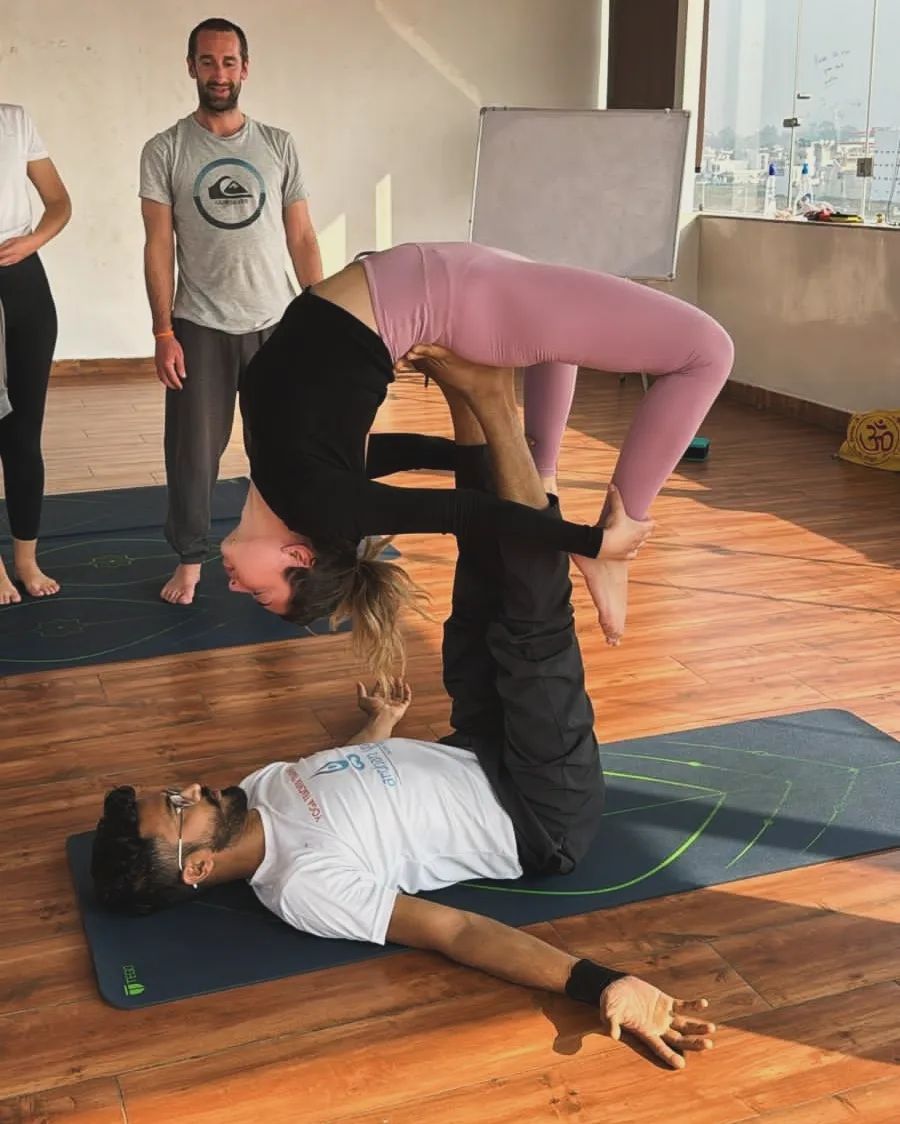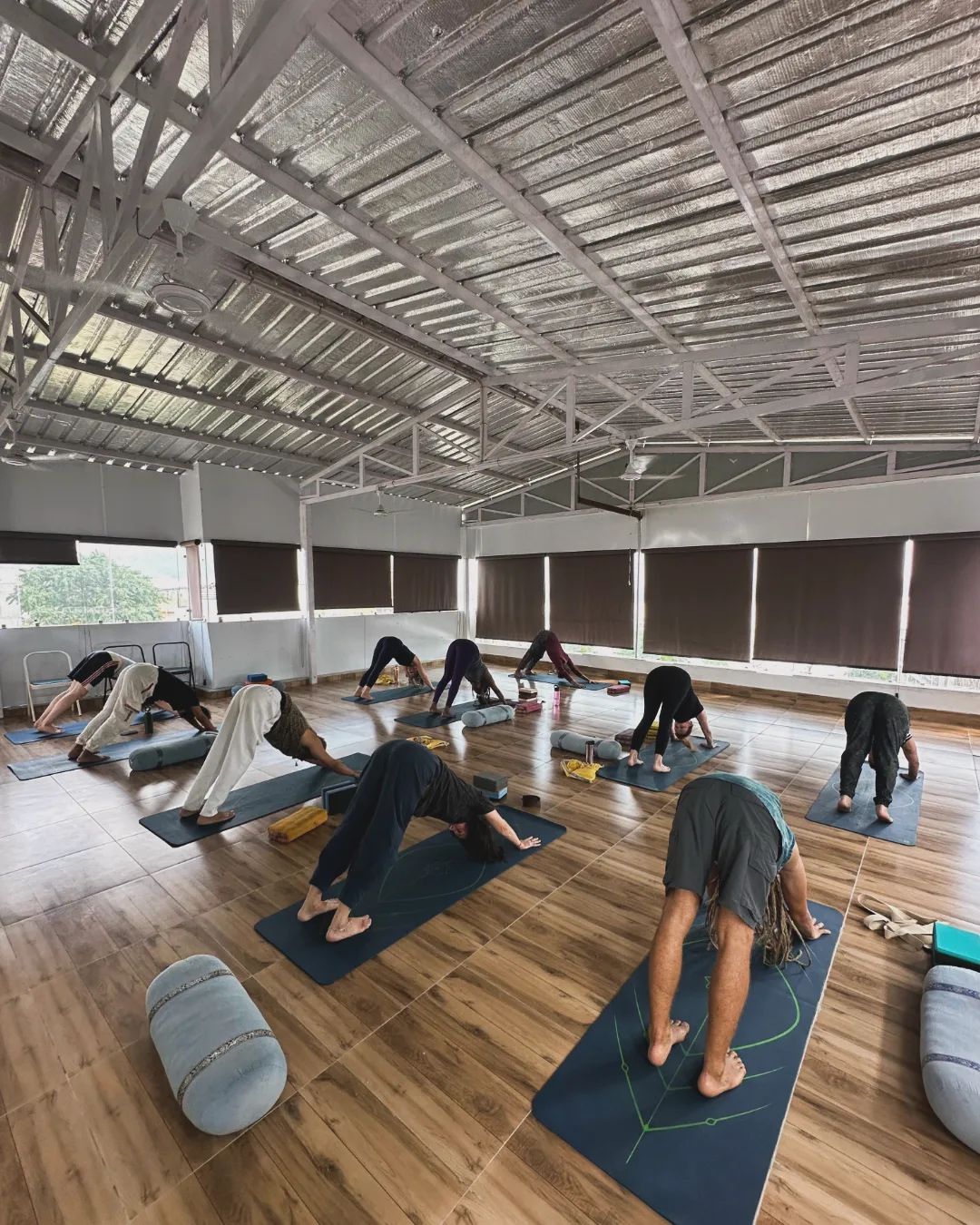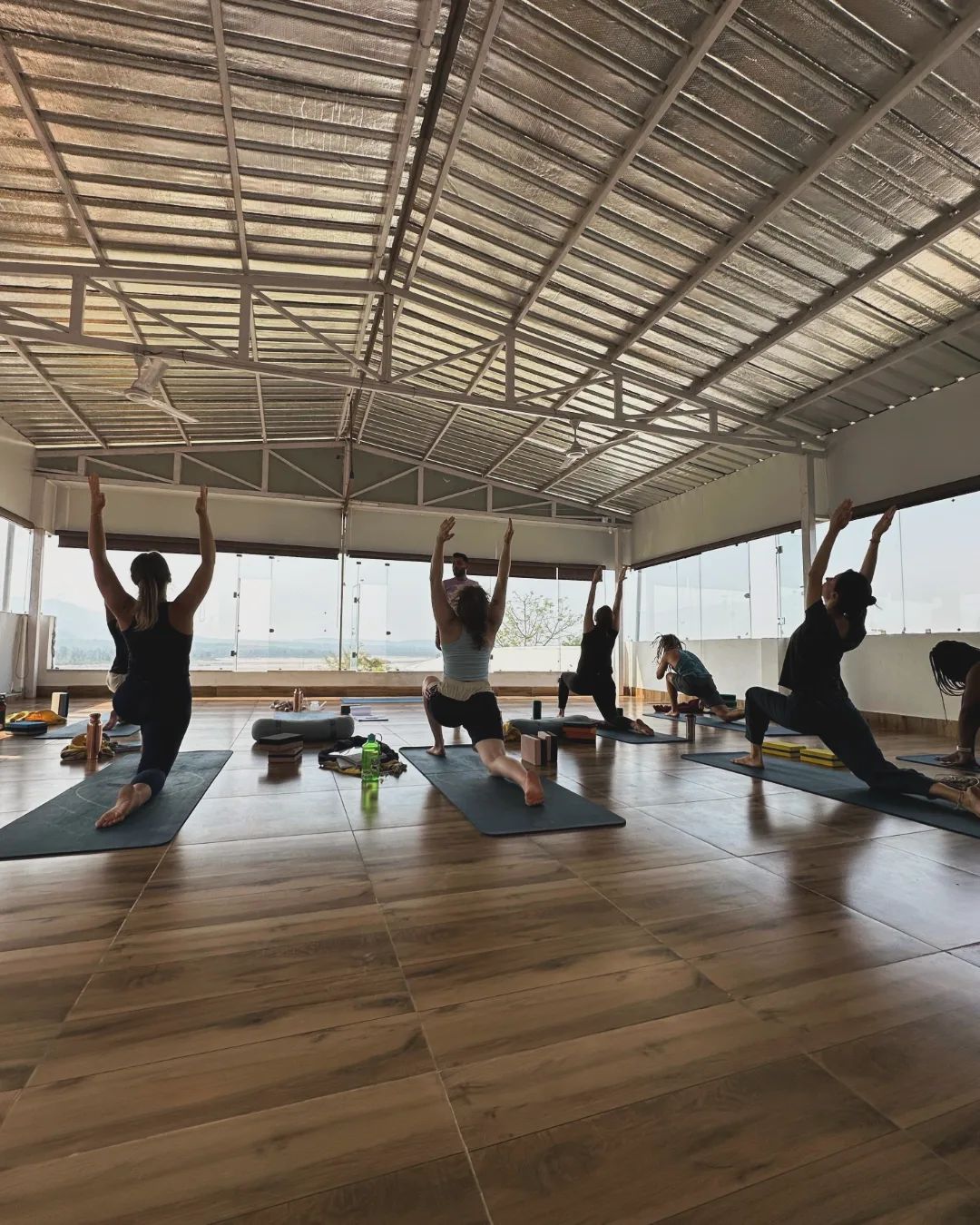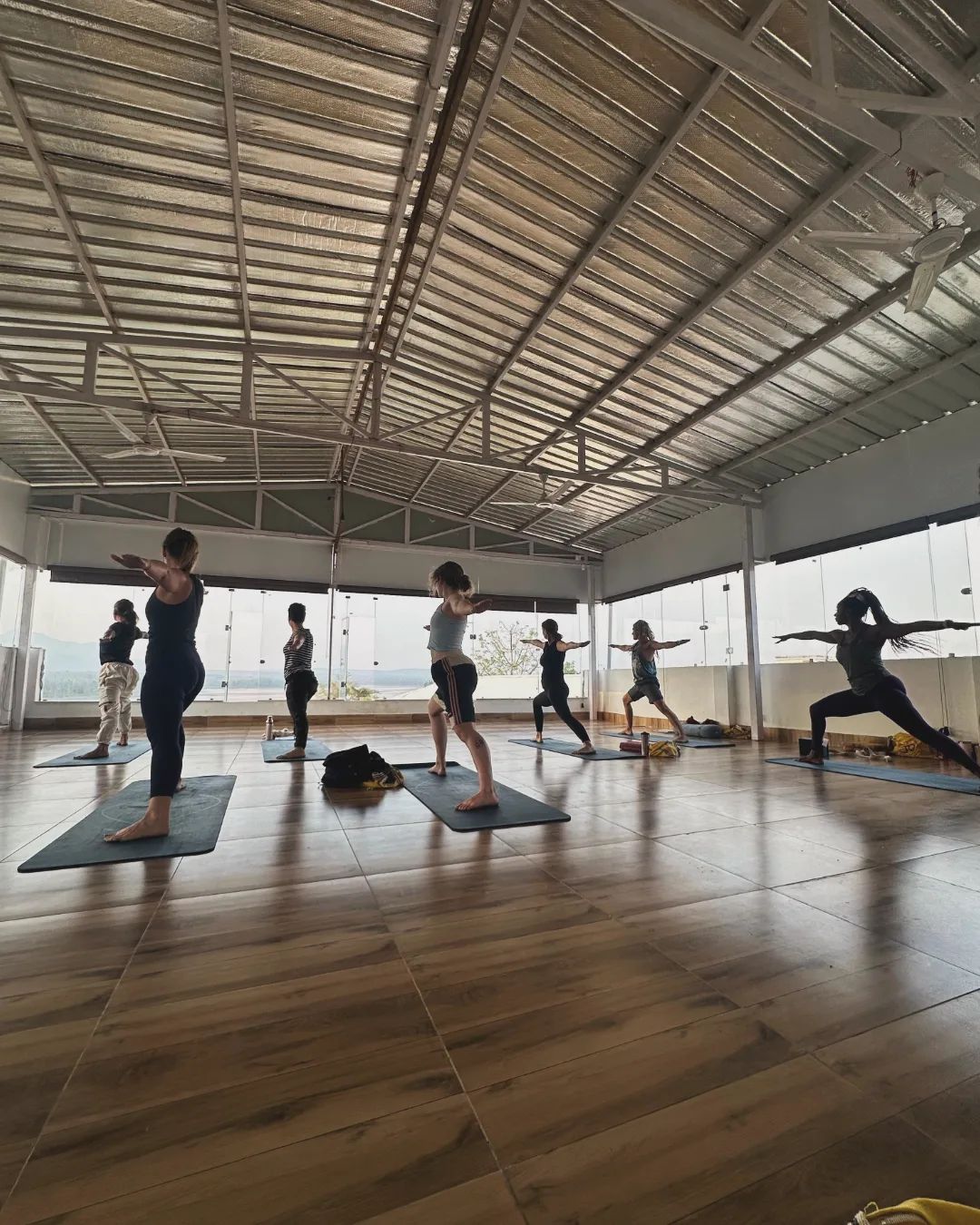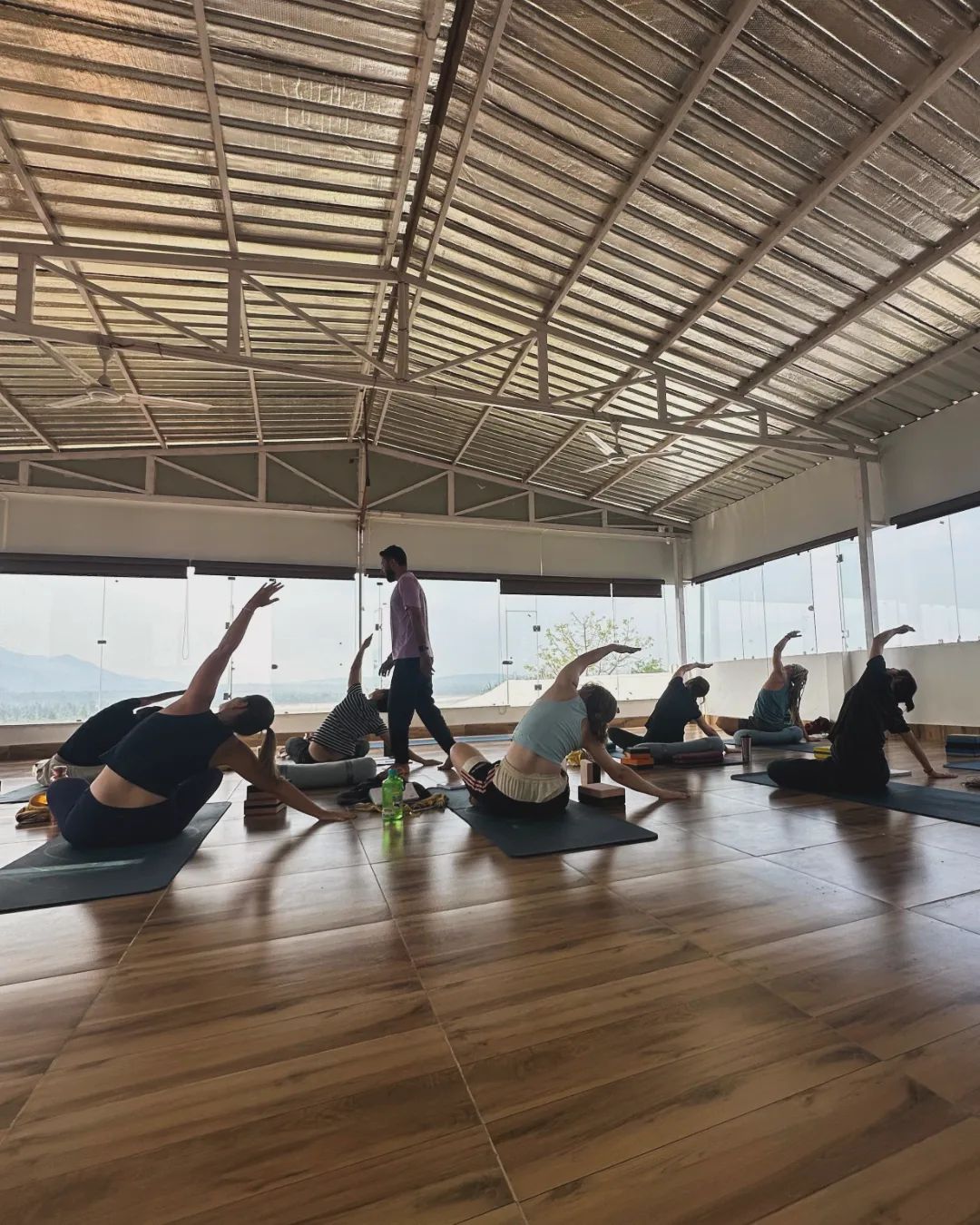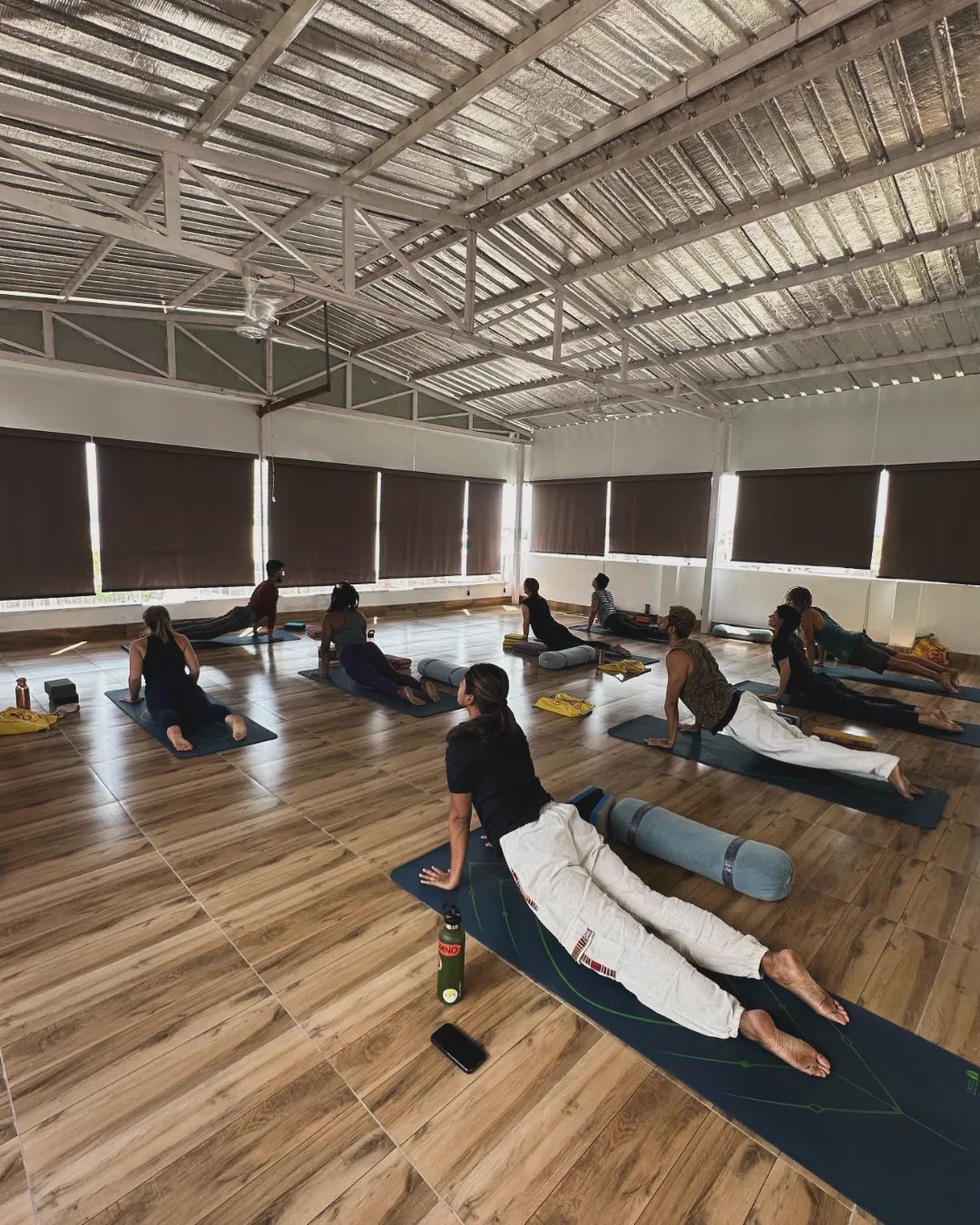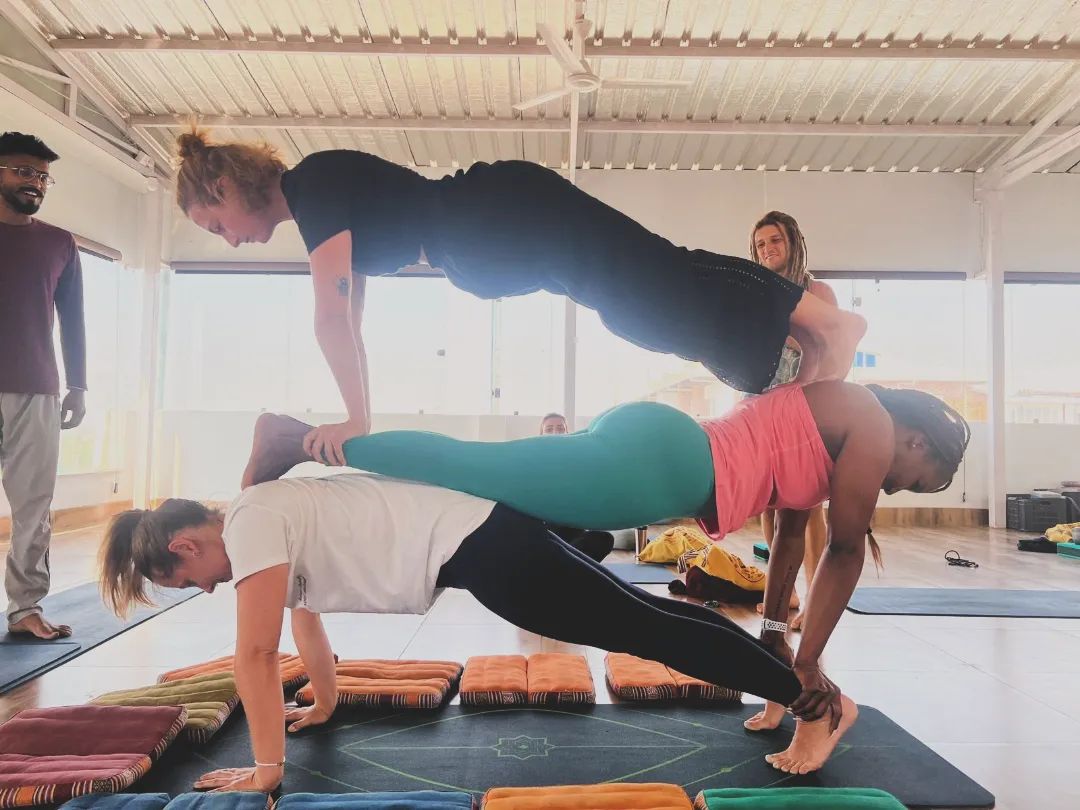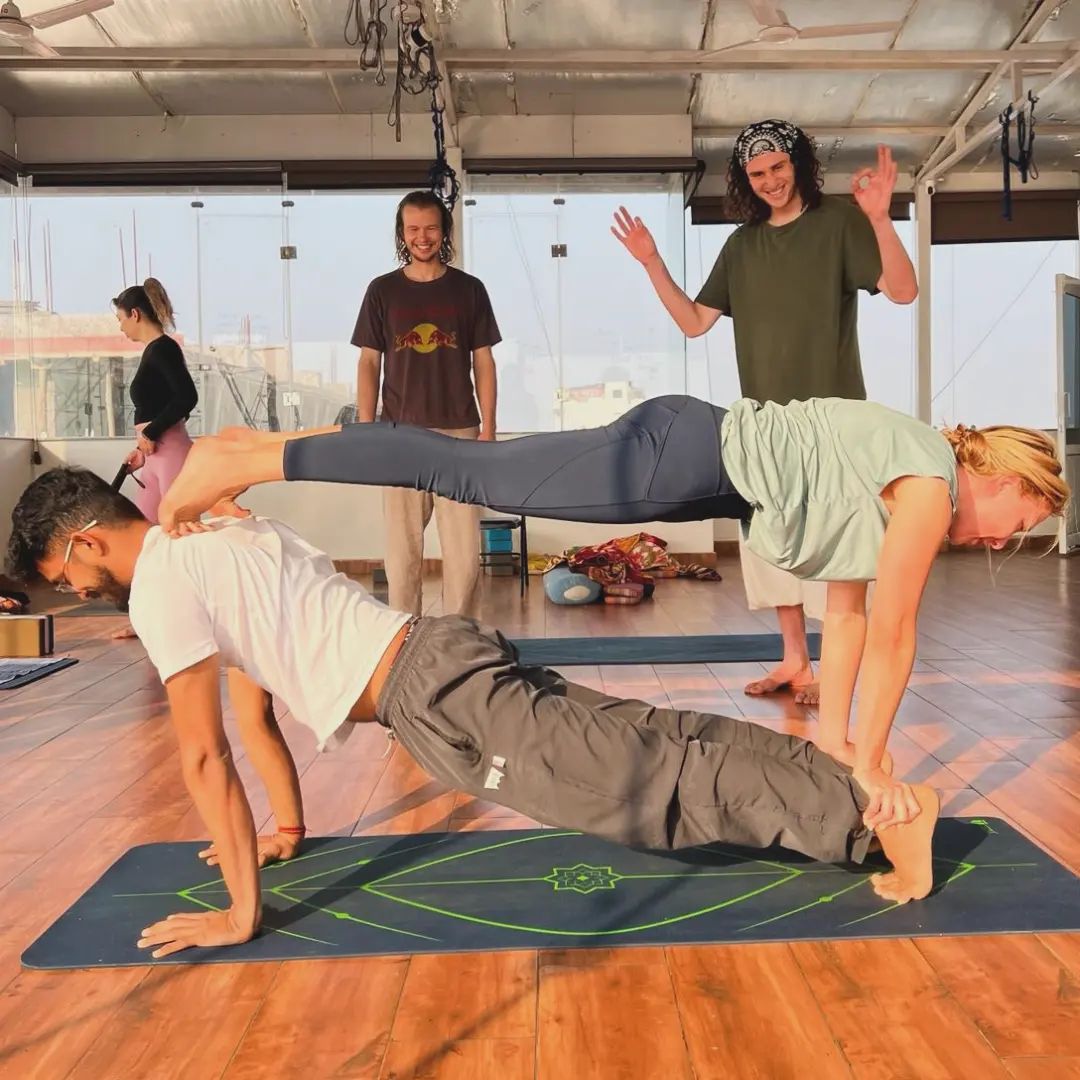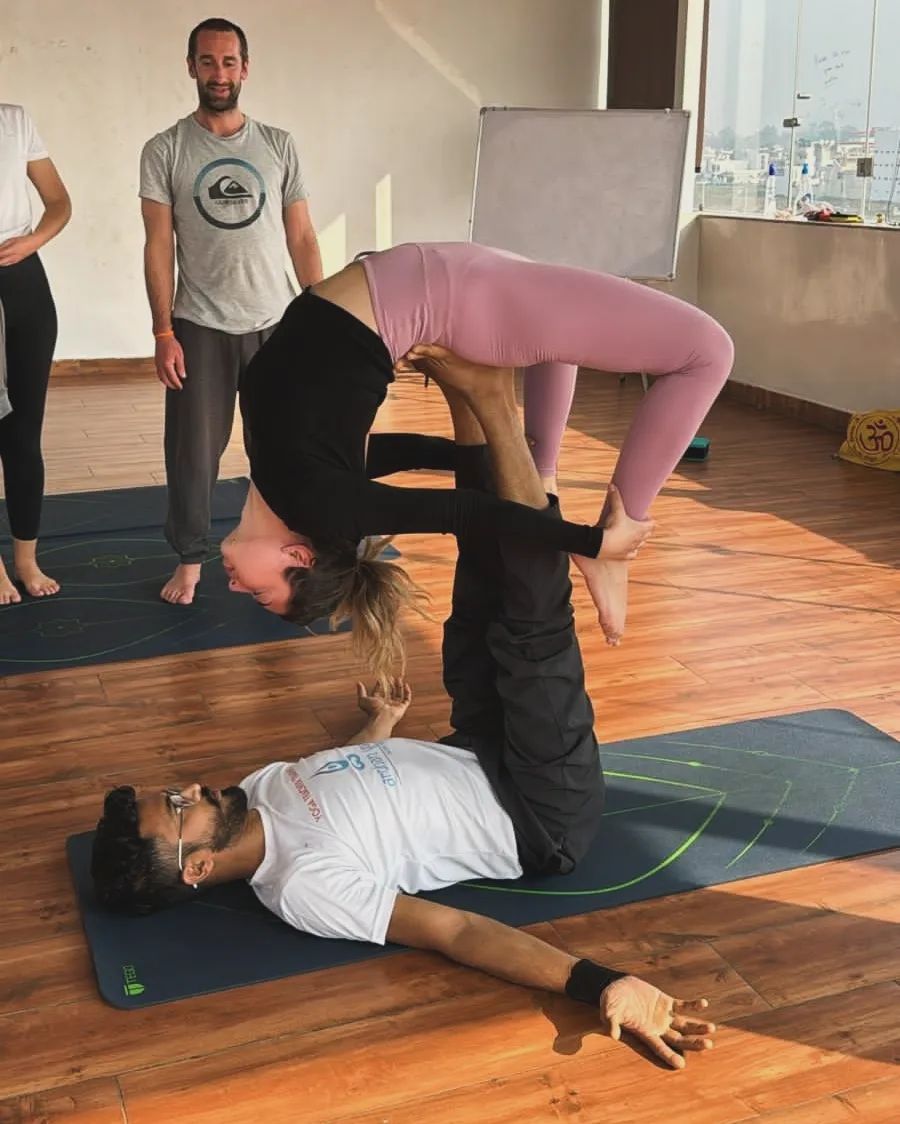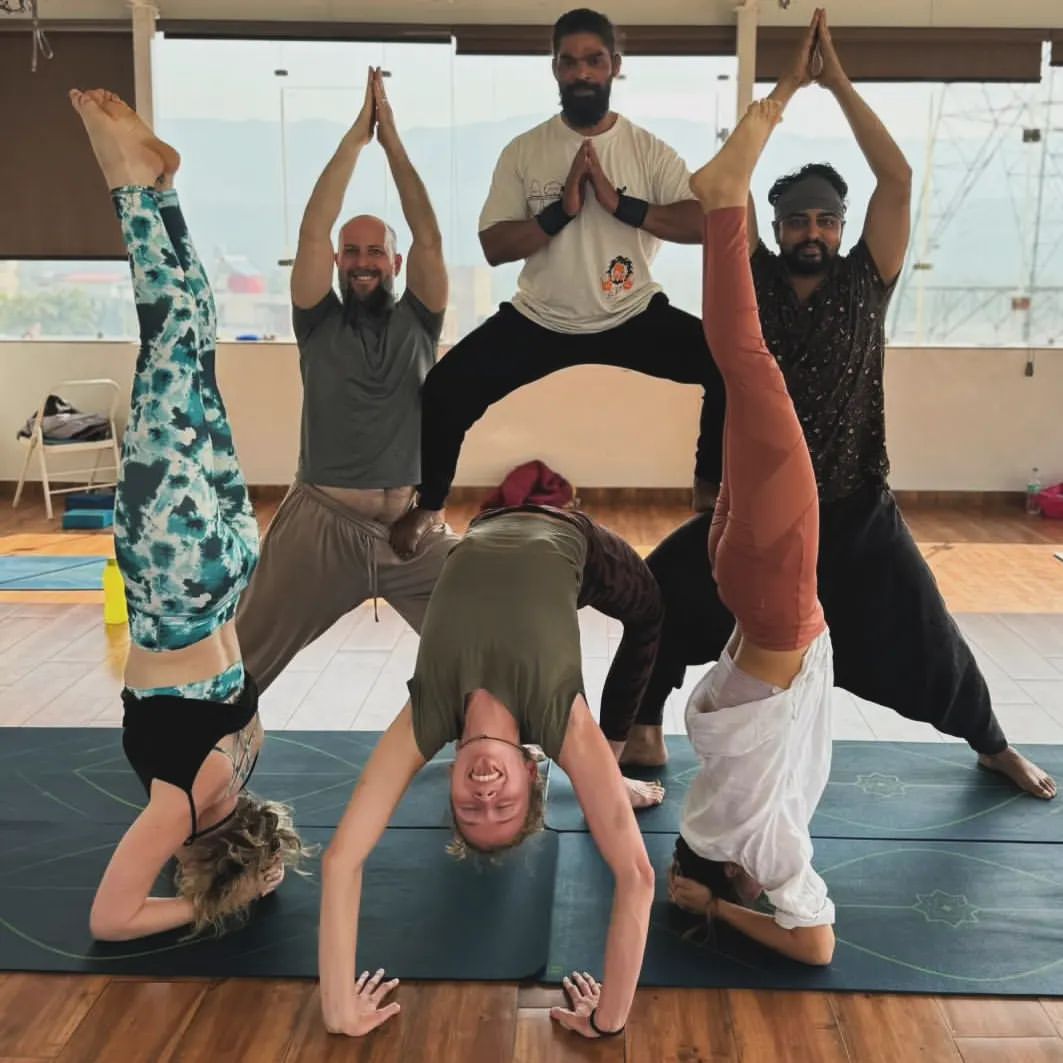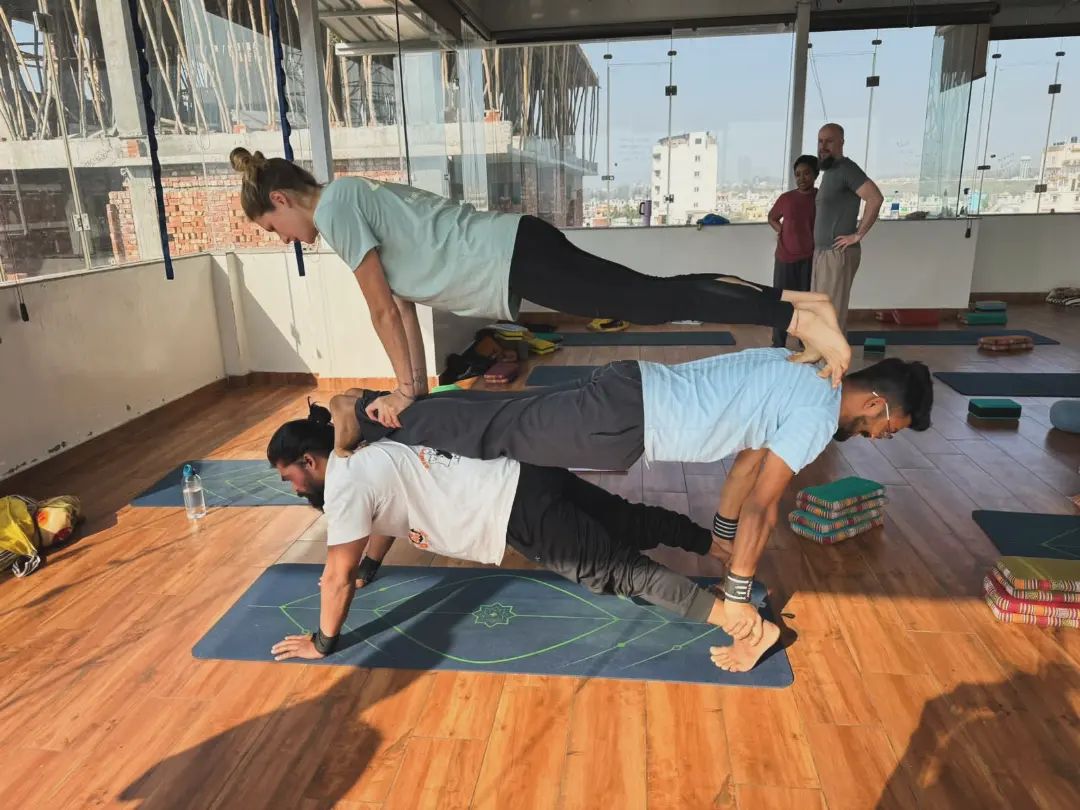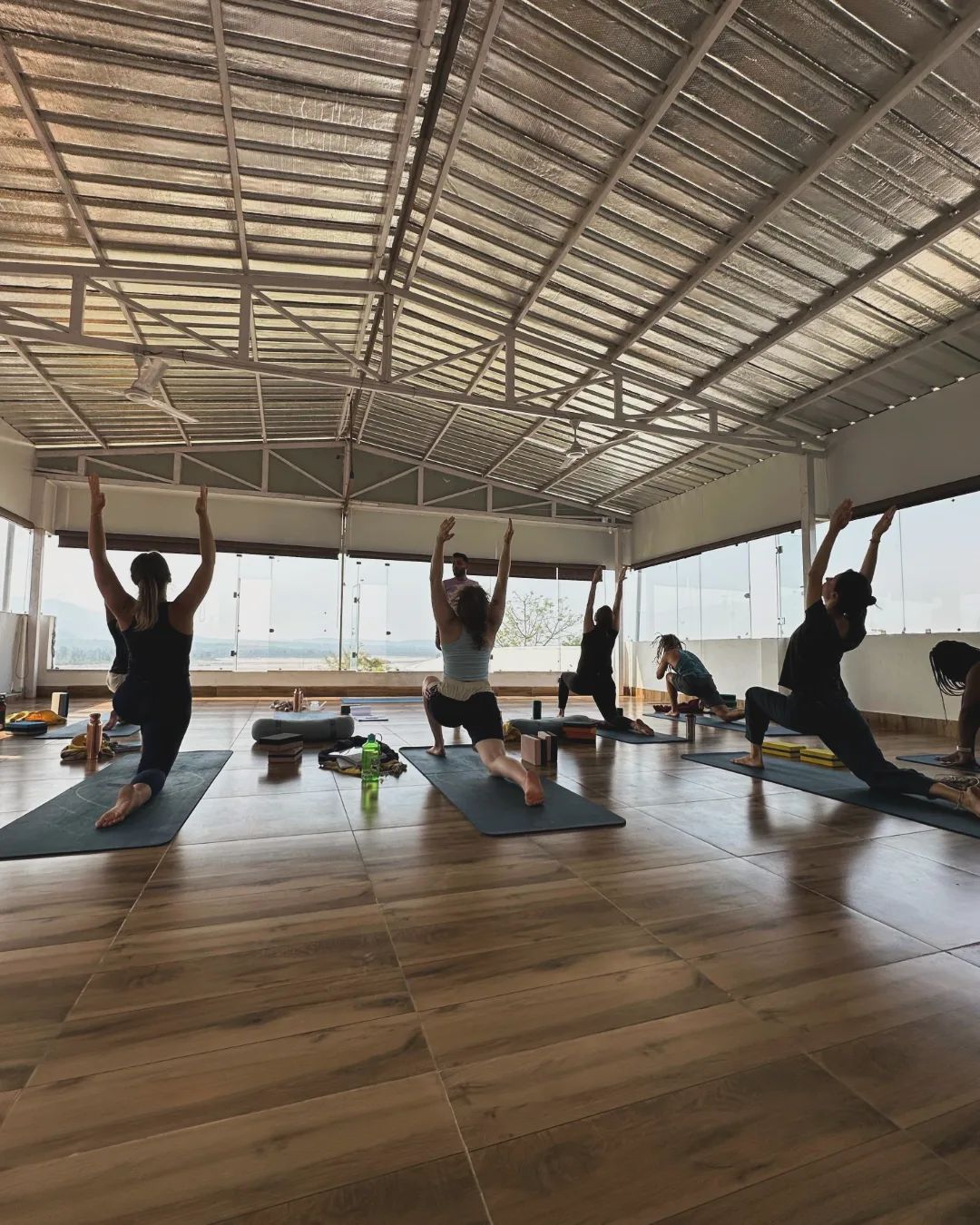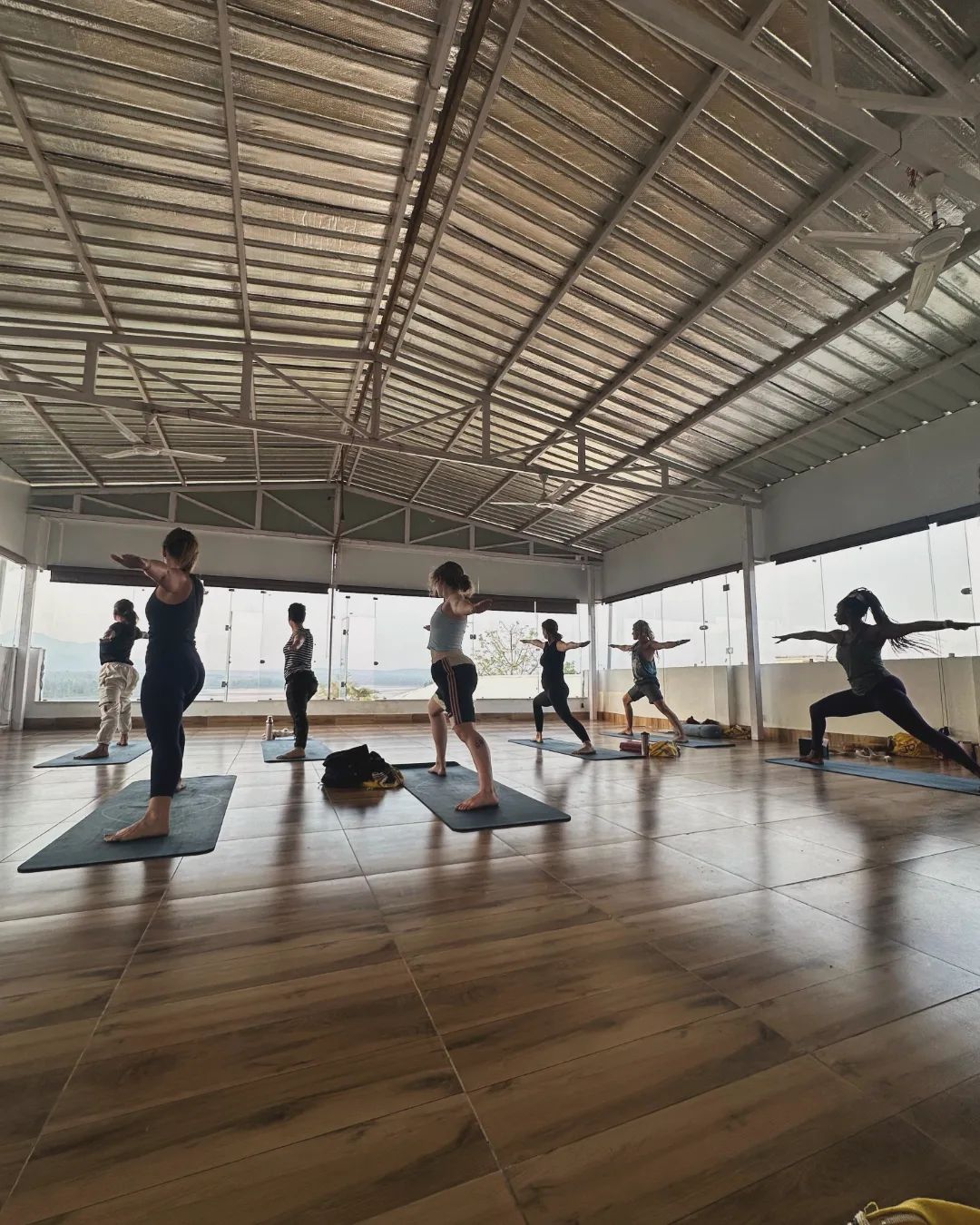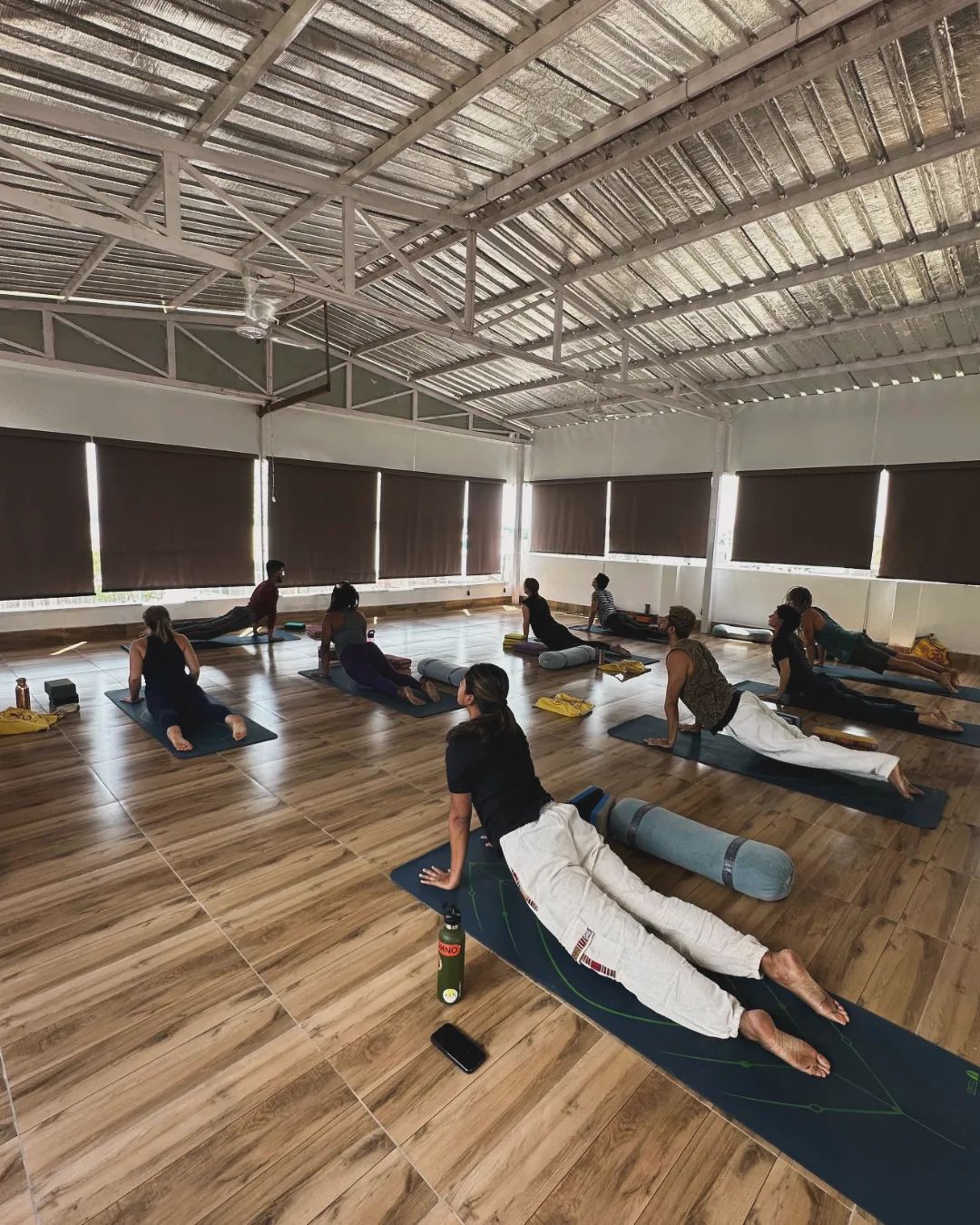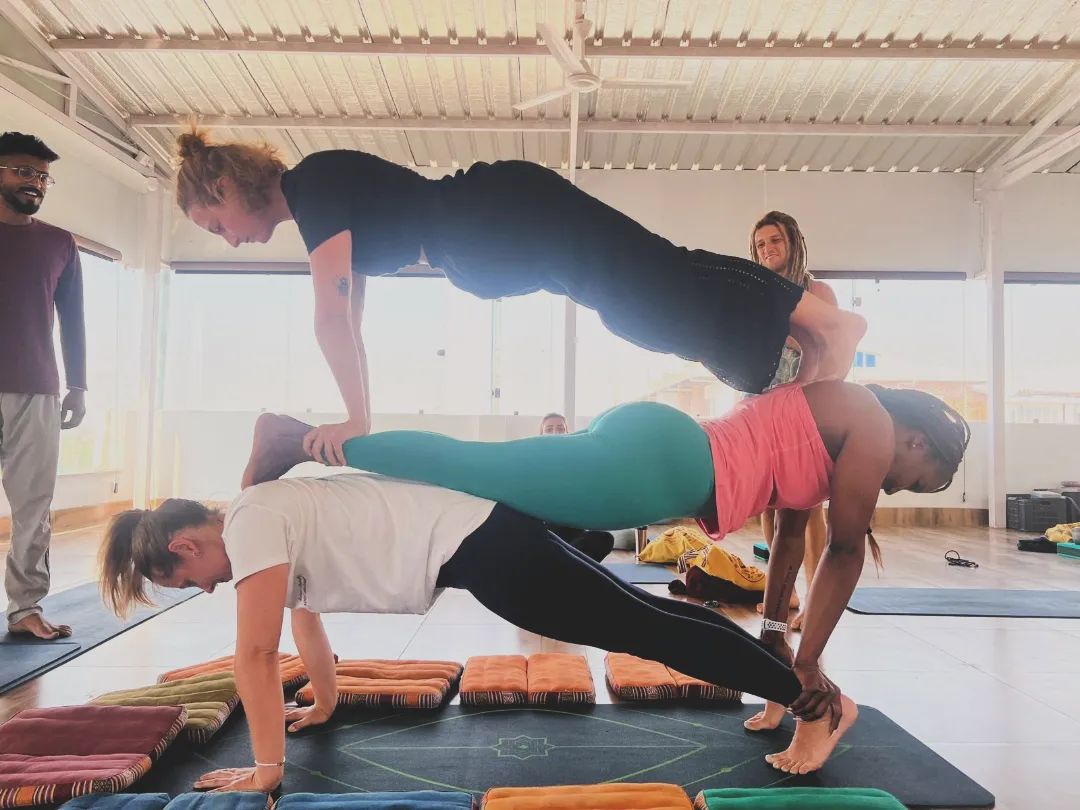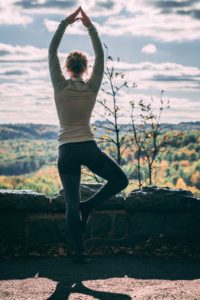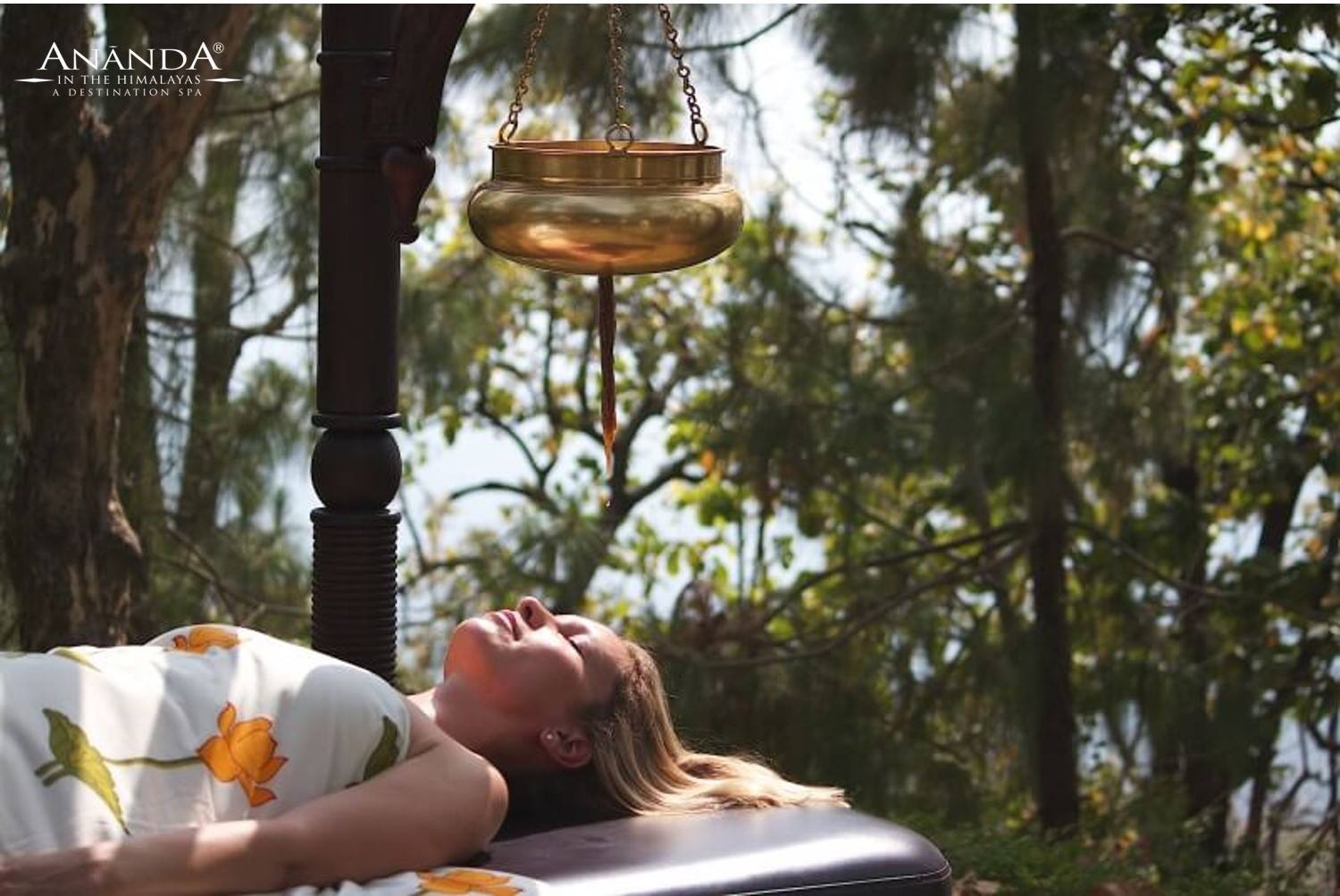BKS Iyengar first introduced aerial props. He tied the ropes to walls and ceilings. Like the other props he invented, aerial reinforcements aimed to help the practitioner go deeper into specific postures, easily access inverted poses, and assist in healing. Aerial Yoga is also known as Anti-Gravity Yoga, Arial Yoga, Trapeze, Hammock, Silks, etc.
There is no absolute definition of the term., however, It is a synthesis of Yoga, calisthenics, physiotherapy, pilates, and acrobatics. Aerial Yoga training is a great complementary and supplementary practice to traditional Yoga. However, it is not a standalone alternative to standard yoga practice.
Primarily, Aerial Yoga is more accessible than other traditional forms of Yoga as the rig supports the body weight and less muscle engagement is involved. Hence, it is suitable for beginners. Similarly, Aerial Yoga can be more challenging for advanced practitioners with slight adjustments. Some Aerial Yoga Benefits are as follows:
- Assisted Stretching
- Easier access to inversions and handstand variations
- Using gravity for spinal traction
- Pull-based movements
- Relieve back pain
- Heal Injuries
Category
- Teacher's Training
- 50 Hours YTTC
Styles
- Aerial Yoga
Skill level
- Beginner
- Intermediate
- Advance
Food Type
- Vegetarian
Meals
- All Meals
- Breakfast
- Lunch
- Dinner
Retreat For
- Family Friendly
- Solo Traveller
- For Couples
Meet the instructors
Program
Day 1
FIRST-DAY SCHEDULE
| 11:00 – 14:00 | Arrival and Check-In Formalities |
| 14:00 | LUNCH |
| 16:30 | Retreat Orientation and Introduction |
| 19:00 | DINNER |
Day 2
SCHEDULE (DAY2-6 except Sunday)
| 06:00 – 07:30 | Ashtanga Vinyasa Yoga |
| 07:30 – 08:30 | Detox/Pranayama & Mantra |
| 08:30 – 10:00 | Hatha Yoga |
| 10:00 – 10:45 | Breakfast |
| 11:30 – 12:45 | Yoga Anatomy |
| 12:45 – 14:00 | Alignment & Adjustment/Teaching Methodology |
| 14:00 – 14:45 | Lunch |
| 16:00 – 17:30 | Yoga Philosophy/Meditations |
| 19:00 – 19:45 | Dinner |
| 21:00 | Lights off19:00 DINNER |
Day 3
LAST DAY SCHEDULE
| 06:00 – 07:30 | Ashtanga Vinyasa Yoga |
| 07:30 – 08:00 | Detox/Pranayama & Mantras |
| 08:30 – 10:00 | Hatha Yoga |
| 10:00 | BREAKFAST |
| 11:00 | DEPARTURE |
Examination/ Evaluation Method for Aerial Yoga Course
Assessment based on
- Execution of the learned techniques in the teaching practice sessions and primarily the final session
- Attendance
- Written examination of yoga anatomy
- Overall Conduct and behavior
The first day is the course orientation, along with other sessions. The exams are on the last day, along with certification distribution.

